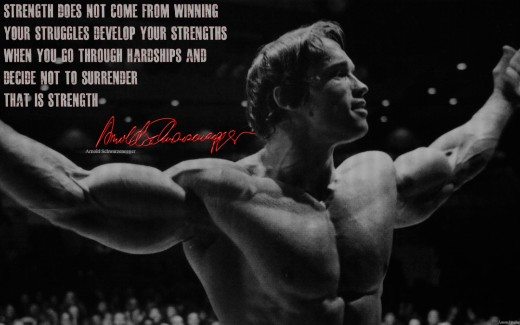Success Advice
How to Look Like the Alpha Male in the Boardroom
An alpha male in the business world is far from the chest-bumping, wedgie-giving, neanderthal-like stereotypes that plague the term. An alpha male in the business world is a confident, assertive leader who knows what he wants and has the humility to understand – and do – the work and sacrifice needed to get it.
The alpha’s internal strength is evident when you talk to him, but the pride he takes in how he looks is also noticeable, and it leads others to give him respect because his appearance commands it.
Here’s how to achieve that respect simply by how you look. Here’s how to look like an alpha male in the boardroom.
1. Build an Alpha Body
An alpha male isn’t rounded girth. He’s not a mass of muscle. He’s more an athlete, a boxer, an martial artist than a bodybuilder. Bodybuilder-type muscle screams insecurity as well as the perception that more attention is paid to training than to business. The body of an athlete conveys pride and strength – which is what we’re after.
The ideal male physique is in the shape of an X. The upper body is broad at the shoulders and tapers down to a thin waist, that tapers out to muscular legs. Here are 3 tips that’ll help you build this physique:
Use a “snatch grip” in your pulls
Shoulder width is the conventional grip of all pulling exercises (think pull-ups, pull-down, and bent over rows). Widen the grip to the extreme by having your pinkies almost touching each end of the bar. This will give your shoulders, traps, and lats a breadth to them that will make your waist look thinner.
Pull more than you push
Developing the back muscles – the lats, traps, rhomboids etc… – give your shoulders the appearance of being broader, and well and your chest. Your “pushes” are the exercises that work your quads, chest, shoulders, calves, and triceps. Make sure you’re working the pulling muscles (hips and biceps included) at least 1.5x the amount that you’re training the pushing muscles, with the main focus going to the muscles of the hips and the back.
Train for performance first, aesthetics second
Train like an athlete to look like an athlete. As a former amateur boxer, and a guy who’s packed on over 40 lbs of muscle to my once skinny frame, I can tell you with confidence that by training like an athlete, you’ll look like an athlete.
No matter what you’re doing in the gym, maintain your performance level by participating in a sport, even recreationally. Join a rec basketball team, or sign up at a boxing gym.

2. Dress Like an Alpha
Looking like an alpha male is one part physique, one part style. You need control of both to be a true alpha male in the boardroom. Here are 4 style tips for the aspiring alpha male.
Invest in a Tailor First, Fabrics Second
How your clothes fit is more important than what fabrics they’re made of. Find a good tailor, and befriend him. It’s better to buy a cheaper suit and get it tailored than to blow your load on one, bulky, ill-proportioned, expensive suit. In buying expensive and avoiding the tailor, you’ll end up looking cheap.
Buy Quality Over Quantity
With that said above, it’s better to spend the dollar bills on two nice suits, and get them tailored, than it is to buy 4 cheap suits and get those tailored. Success dresses like success. Take pride in how you look if you want to command respect at first glance.
Don’t Go Nuts With Accessories
Keep things simple. The trend today is to do the opposite; to overload on accessories. In doing so you end up looking more like a pirate than an alpha male. Don’t look like a goof. Stick to a nice watch. Avoid the bracelets and bling, and instead get the respect that comes from refined simplicity.
Be Bold
Wear your clothes confidently. Dress in bold colors, not loud ones. Wear clothes that are out of your comfort zone, but not so much that you’re trying to be someone else. And wear them with confidence.

3. Why Would You Want to Be an Alpha?
As I mentioned already, being an alpha male isn’t about being a dick. It’s about being a leader, a man of action rather than contemplation, and it’s about being the best man you can possibly be.
Part of this code is looking as good as you possibly can. Studies repeatedly show that good looking people tend to make more money. This is correlational, of course, but there’s credence in these studies and in this fact. To look your best simply shows that you care and that you have pride and confidence. Don’t distort it with cockiness. Just look your best, take care of your body, and maintain the humility that hard work requires.
Entrepreneurs
The Essential Skills Every Entrepreneur Needs In 2026
Success in the digital age isn’t about luck. It’s about mastering the skills that separate dreamers from doers.

When I was 22 years old, I started my first side hustle as a ghostwriter. (more…)
Did You Know
The Success Patterns You Inherited (And Didn’t Notice)
Your family history may hold the key to why you think, act, and feel the way you do today.

Who are you? Your experiences and your family’s narratives and legacies contribute to your identity. Your ancestry contains individual traits and forces that have been inherited over the years. It also carries the fights and victories of your forebears and older family members. (more…)
Shift Your Mindset
11 E’s That Define Every Great Leader And Why Most People Miss Them
If you’ve ever felt the pull to lead, this is your roadmap to turning inner potential into lasting influence.

What Is Leadership, Really?
Leadership is far more than a title or position. It’s the ability to envision a future, inspire others, and align people toward a shared goal. (more…)
Personal Development
This Silent Habit Might Be Sabotaging Your Career
Your temper might be costing you more at work than you realize. Here’s why it matters.

You may be the last to know that you’re walking around with a giant chip on your shoulder. Meanwhile, your coworkers are giving you a wide berth. (more…)
-

 Life4 weeks ago
Life4 weeks ago9 Harsh Truths Every Young Man Must Face to Succeed in the Modern World
-

 Success Advice4 weeks ago
Success Advice4 weeks agoInside the TikTok Resume Hack That’s Fooling Recruiters (For Now)
-

 Change Your Mindset3 weeks ago
Change Your Mindset3 weeks agoThe One Leadership Habit That Separates the Great From the Forgettable
-

 Personal Development3 weeks ago
Personal Development3 weeks agoThis Silent Habit Might Be Sabotaging Your Career
-

 Business2 weeks ago
Business2 weeks agoWhy Your E-Commerce Fulfilment Is Probably Broken (And How to Fix It)
-

 Shift Your Mindset2 weeks ago
Shift Your Mindset2 weeks ago11 E’s That Define Every Great Leader And Why Most People Miss Them
-

 Did You Know1 week ago
Did You Know1 week agoThe Success Patterns You Inherited (And Didn’t Notice)
-

 Business1 week ago
Business1 week agoThe Hidden Money Pit in Your Operations (and How to Use It)



























8 Comments